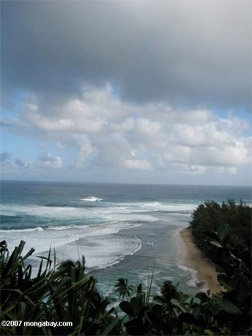We’re All “Wilderness Warriors”
In Wilderness Warrior, a new and acclaimed biography of Theodore Roosevelt, author Douglas Brinkley says the former Rough Rider’s crusade for conservation was perhaps the greatest presidential initiative between the Civil War and World War II. Brinkley credits the 26th president with saving, virtually single-handedly, 234 million acres of public lands through the creation of national parks, forests and monuments, like the Grand Canyon, as well as federal bird reservations and game preserves.
But just as important as the special places Roosevelt protected was the visionary conservation ethic he instilled in the nation. Revolutionary at the time, the notion that America must manage its natural resources for the long haul and with future generations in mind is the cornerstone of today’s environmental policy. When it comes to protecting public lands, one of the best examples of this ethos is the Wilderness Act, a landmark measure passed by Congress 45 years ago and recently noted by President Barack Obama in designating September as Wilderness Month.
 Ke’e Beach, Kauai |
Enacted well before the advent of modern environmental measures such as regulations to address clean air and clean water, the Wilderness Act embodies Roosevelt’s notion that “conservation is not just about the needs of people now alive.” It empowers Congress to afford the country’s most remote and rugged landscapes the highest level of protection from development or other activities that would put the wild nature of these areas at risk. As President Lyndon Johnson said in signing the law, “If future generations are to remember us with gratitude rather than contempt, we must leave them more than the miracles of technology. We must leave them a glimpse of the world as it was in the beginning, not just after we got through with it.”
Today the act has fostered a national preservation system that protects almost 110 million acres of our public lands as wilderness in 44 states and Puerto Rico, ranging from an unbroken expanse of nearly 13 million acres in the central Brooks Range of Alaska, to a small gem of several thousand acres in New Jersey, just 26 miles from Times Square. No matter the size, these areas are off limits to mining, logging, drilling and motorized vehicle use, while encouraging popular recreational activities such as hunting, fishing, hiking and horseback riding.
The Wilderness Act is the gift that keeps on giving, as every president since 1964 has had a hand in designating more wilderness areas. In March, President Barack Obama signed legislation that protected two million acres of wildlands in nine states, marking the largest single addition of new wilderness in 15 years. Among the places preserved for posterity are Idaho’s Owyhee-Bruneau Canyonlands—a quarter the size of Yellowstone National Park and a prime example of the arid sagebrush lands associated with the American West—plus nearly 750,000 acres of diverse new wilderness areas in California ranging from the outskirts of Los Angeles County to the Sierra Nevada Mountains.
And there’s more on the way. Members of Congress are currently considering more than two dozen proposals, which, if enacted, would designate another two million acres of wilderness. Potential new areas would protect wild landscapes in half a dozen Western states. If the Montana proposals are approved, for example, it would be the first new wilderness designation in the Big Sky state for more than a quarter of a century.
It’s not surprising that Roosevelt’s concept of managing our natural heritage for future generations retains broad appeal for Republicans and Democrats alike. In survey after survey, wilderness protection is widely supported by Americans from every region of the country, all walks of life and the across the ideological spectrum. The desire to save the best places our country has to offer for our descendants transcends party lines.
A reminder of Roosevelt’s unwavering commitment to conservation couldn’t come at a more critical juncture. Today, global warming, unchecked development and widespread off-road vehicle use are jeopardizing the future of our most cherished landscapes. These multiple threats only underscore the need for all of us to serve as wilderness warriors and, like Roosevelt, be resolute in ensuring that America’s last wild places are protected.
Jane Danowitz directs the Public Lands Program for The Pew Charitable Trusts. Mike Matz is the executive director of the Campaign for America’s Wilderness.